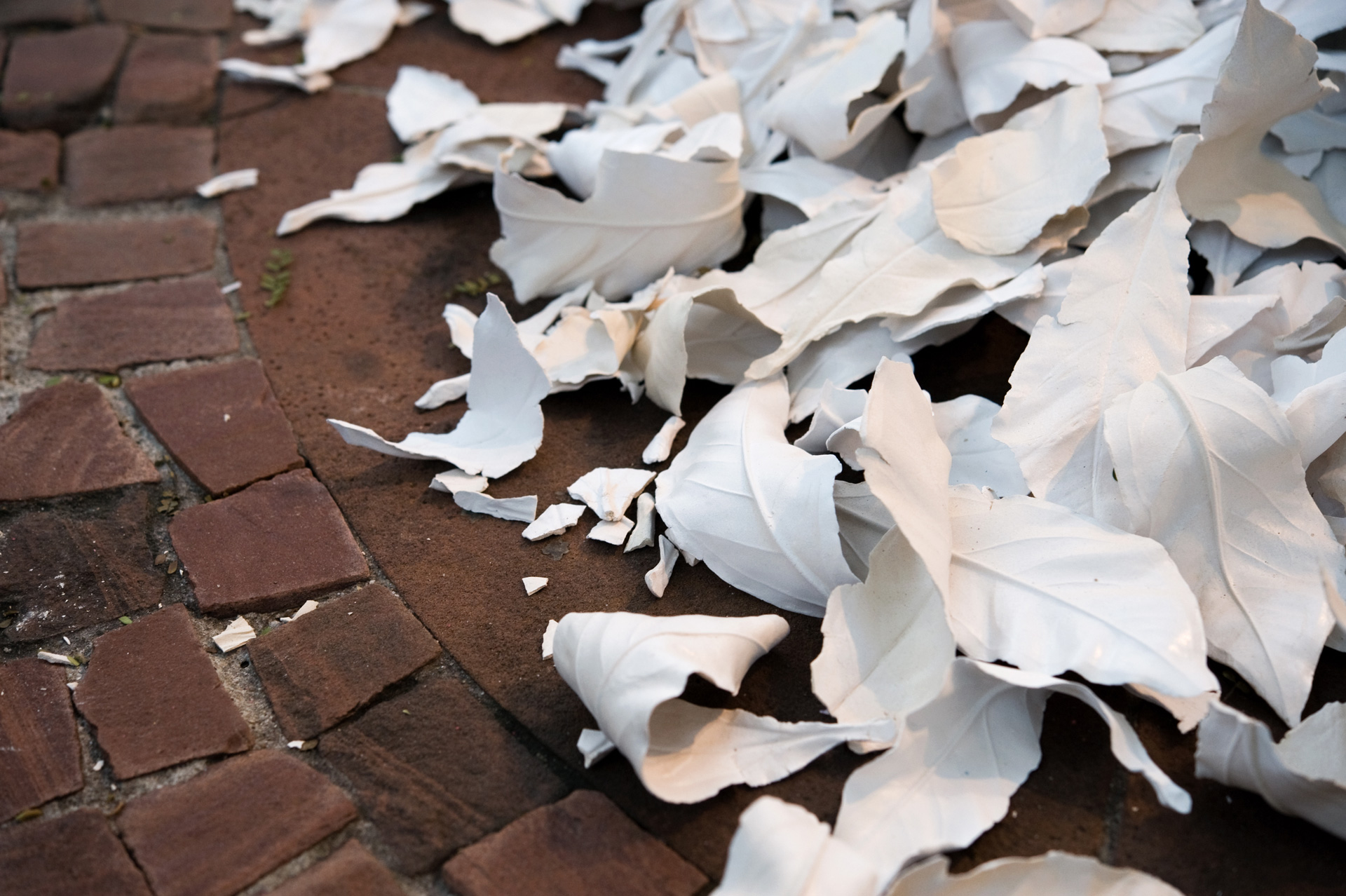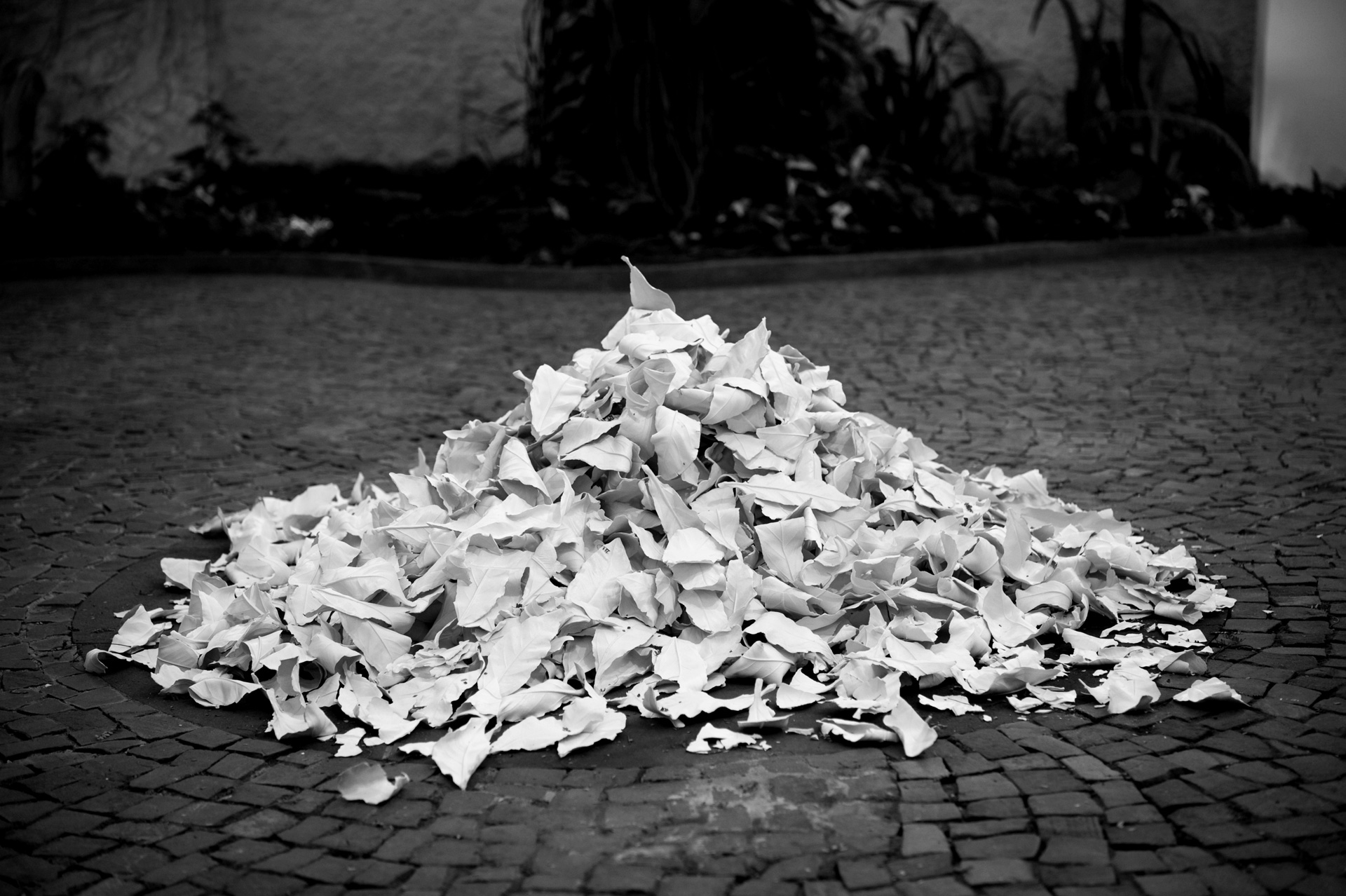Winter
intervention at the Garden of the Museum Lasar Segal - São Paulo
ceramics and enamel
july 2013

The work WINTER explores the memory of garden of the house / museum where the artist Lasar Segal lived a few decades ago. From the ephemerality of the leaves falling from the trees and are swept and disposed every day, the artist explores the poetic potential, transforming the collected object into a work of art, by replicating in ceramic thousands of times a single leave of there garden, keeping its textures and characteristics.
The work questions the cycles of life , the false idea that we call life itself and ceramics that , as a formal instrument , carries with it a whole load of continuity, testimony of past civilizations, the marks of time and the fight against it.
Winter is an attempt to prolong this fragile existence of life in the garden , no longer inhabited by its original owner , but revived every day by the audience that passes and active museum every day. The name WINTER itself carries the idea of conservation of things, hibernation, guard and protection.
The work questions the cycles of life , the false idea that we call life itself and ceramics that , as a formal instrument , carries with it a whole load of continuity, testimony of past civilizations, the marks of time and the fight against it.
Winter is an attempt to prolong this fragile existence of life in the garden , no longer inhabited by its original owner , but revived every day by the audience that passes and active museum every day. The name WINTER itself carries the idea of conservation of things, hibernation, guard and protection.










Inverno
intervenção no Jardim do Museu Lasar Segal - São Paulo
cerâmica e esmalte
julho 2013
A obra Inverno explora a memória do jardim da casa/museu onde a algumas décadas viveu o artista Lasar Segal. Da efemeridade das folhas que caem das árvores e que são varridas todos os dias e dispensadas, o artista explora todo o potencial poético, transformando o objeto coletado em obra de arte, replicando em cerâmica uma única folha do jardim milhares de vezes, conservando suas texturas e características.
A obra questiona os ciclos da vida, a falsa ideia de permanência que temos da própria vida e a cerâmica, como instrumento formal, carrega em si toda uma carga de perenidade, de registro de civilizações passadas, de marcas do tempo e da luta contra ele.
Inverno é uma tentativa de prolongar essa frágil existência da vida no jardim, já não mais habitado pelo seu dono original, mas revivido pelo público que ali transita e ativa o museu todos os dias, e o próprio nome inverno carrega a idéia da estação da conservação das coisas, da hibernação, do resguardo e da proteção.
A obra questiona os ciclos da vida, a falsa ideia de permanência que temos da própria vida e a cerâmica, como instrumento formal, carrega em si toda uma carga de perenidade, de registro de civilizações passadas, de marcas do tempo e da luta contra ele.
Inverno é uma tentativa de prolongar essa frágil existência da vida no jardim, já não mais habitado pelo seu dono original, mas revivido pelo público que ali transita e ativa o museu todos os dias, e o próprio nome inverno carrega a idéia da estação da conservação das coisas, da hibernação, do resguardo e da proteção.